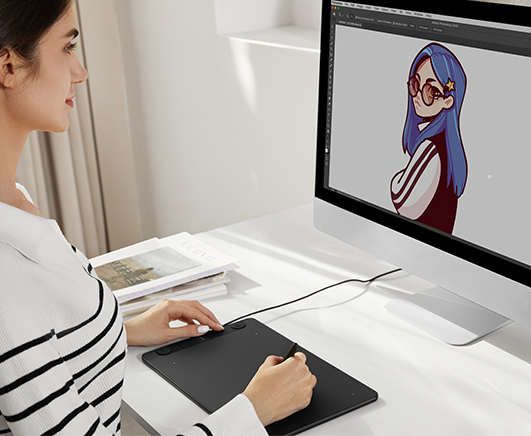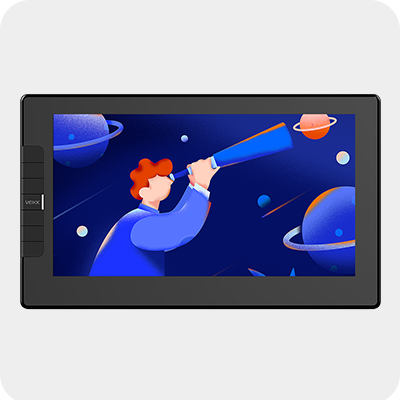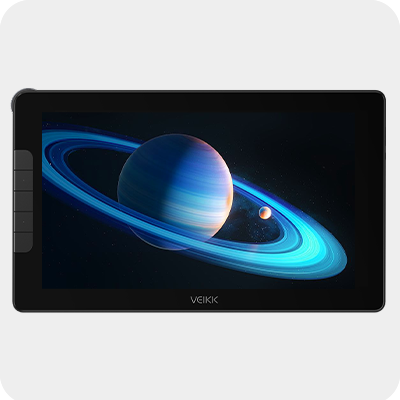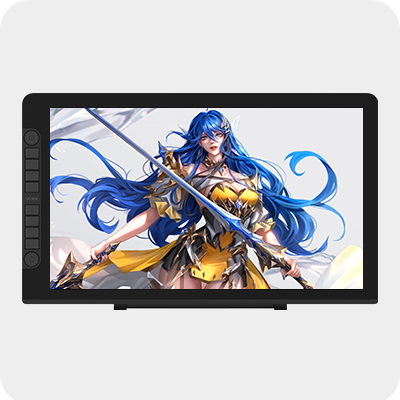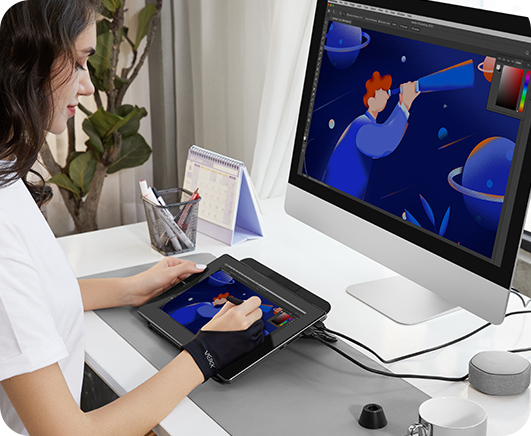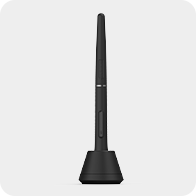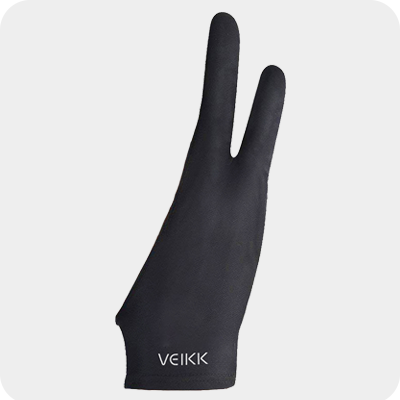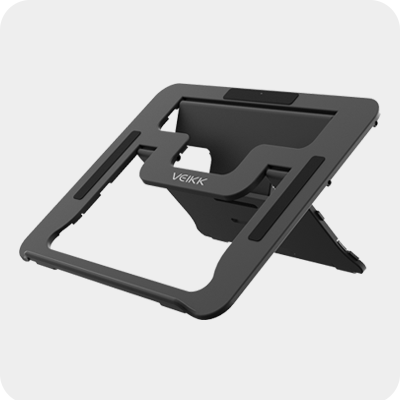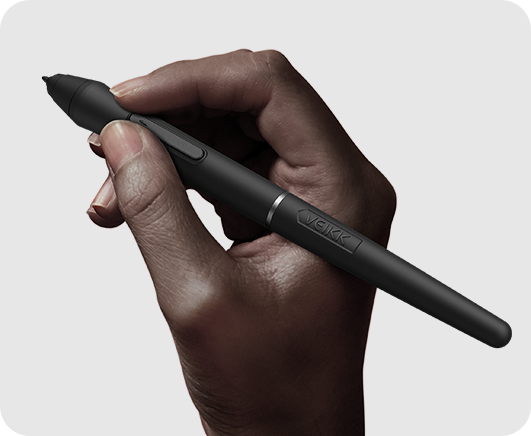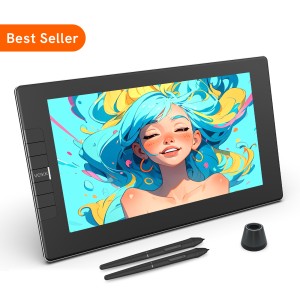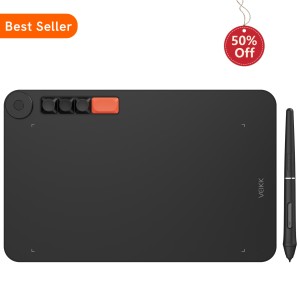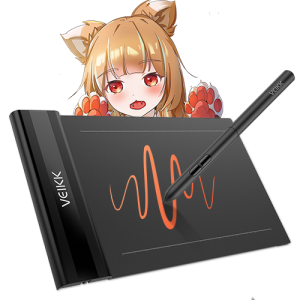소개
디지털 시대가 아티스트가 작품을 창작하는 방식을 혁신적으로 변화시켰습니다. 전통적인 예술 양식은 점점 기술과 융합하고, 드로잉 태블릿 및 아이패드와 같은 도구는 아티스트에게 인기있는 선택지가 되었습니다. 그러나 특별한 드로잉 태블릿과 아이패드 (또는 아이패드 프로) 중 어떤 것을 선택해야 할지를 결정하는 것은 아티스트에게 어려운 결정입니다. 이 기사에서는 이러한 두 가지 옵션을 비교하여 여러분의 예술적인 요구에 더 적합한 것을 결정하는 데 도움을 드리겠습니다.
드로잉 태블릿:
장점:
정밀도 및 감도: Veikk Creator 및 Studio 시리즈와 같은 드로잉 태블릿은 탁월한 정밀도와 감도를 제공합니다. 약간의 터치에도 반응하므로 섬세한 작업에 이상적입니다.

맞춤 설정: 많은 드로잉 태블릿은 맞춤 설정 가능한 버튼 및 바로 가기 키를 제공하여 아티스트가 워크플로우를 최적화하고 시간을 절약할 수 있습니다.
전문 소프트웨어 호환성: 이러한 태블릿은 Adobe Photoshop 및 Illustrator와 같은 프로페셔널 소프트웨어와 원활하게 작동하도록 설계되었습니다.
주의산물 없음: 드로잉 태블릿에는 아이패드와 같은 다양한 앱 및 알림이 없으므로 집중된 예술적 환경을 제공합니다.
단점:
가격: 고품질의 드로잉 태블릿은 비싸며, 특히 초보자에게는 높은 비용입니다.
학습 곡선: 일부 아티스트는 전통적인 도구에서 드로잉 태블릿으로의 전환이 어려울 수 있습니다.
이동성 제한: 드로잉 태블릿은 덩치가 크며 컴퓨터가 필요하므로 아이패드보다 휴대성이 떨어집니다.
iPad / iPad Pro:

장점:
휴대성: 아이패드는 매우 휴대성이 뛰어나며 아티스트가 어디서든 창작할 수 있게 합니다. 특히 아이패드 프로 모델은 일부 노트북과 유사한 성능을 제공합니다.
다용도성: 아트 작업 이외에도 아이패드는 웹 브라우징부터 영화 시청까지 다양한 작업에 사용할 수 있습니다.
애플 펜스: 애플 펜스는 우수한 민감성과 최소한의 지연 시간을 제공하여 훌륭한 드로잉 경험을 제공합니다.
앱 생태계: 앱 스토어에는 Procreate 및 Adobe Fresco와 같은 아트 중심 앱이 풍부하게 제공됩니다.
단점:
가격: 기본 아이패드는 상대적으로 저렴하지만, 아이패드 프로 및 애플 펜스는 상당한 투자가 될 수 있습니다.
화면 크기 제한: 아이패드의 화면 크기는 대형 드로잉 태블릿과 비교하여 작을 수 있어 모든 아티스트에게 적합하지 않을 수 있습니다.
소프트웨어 제한: 훌륭한 아트 앱이 있지만 데스크톱용 프로 소프트웨어는 더 많은 기능과 기능성을 제공할 수 있습니다.
어느 것이 아티스트에게 더 나은가요?
드로잉 태블릿과 아이패드의 선택은 여러분의 특정한 요구 사항과 선호도에 따라 다릅니다. 프로페셔널한 정밀도와 민감성을 요구하는 아티스트나 일러스트레이터는 특별한 드로잉 태블릿이 더 나을 수 있습니다. 그러나 휴대성, 다용도성을 가치 있게 생각하고 멀티펑셔널 장치의 이점을 즐기는 경우, 아이패드 또는 아이패드 프로와 애플 펜스는 훌륭한 선택입니다.
마지막으로, 많은 아티스트들은 드로잉 태블릿과 아이패드를 모두 소유하는 것을 가치 있다고 생각합니다. 그들은 드로잉 태블릿을 디테일한 작업에 사용하고 이동 중이나 보다 느긋한 환경에서 스케치를 할 때 아이패드를 사용합니다. 여러분에게 가장 적합한 선택은 개별적인 아트 스타일과 작업 방식에 달려 있습니다.
결론
드로잉 태블릿과 아이패드는 각각 고유한 장점과 제약이 있습니다. 선택은 여러분의 아트 스타일, 예산 및 어떻게 작업하고 싶은지에 기반해야 합니다. 어느 쪽을 선택하든 이러한 도구는 디지털 시대의 아티스트들에게 흥미로운 가능성을 제공하며 창의성과 표현의 새로운 지평을 열어줍니다.
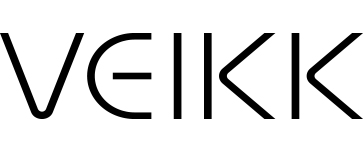
 English
English
 English (UK)
English (UK)
 Deutschland
Deutschland
 España
España
 France
France
 Europe
Europe
 India(EN)
India(EN)
 ไทย
ไทย
 Indonisia
Indonisia
 Vietnam
Vietnam
 Philippines
Philippines
 Southeast Asia
Southeast Asia
 日本(JP)
日本(JP)
 대한민국
대한민국



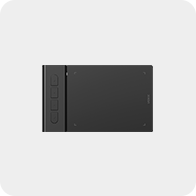
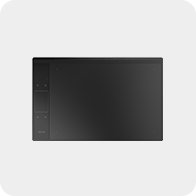
.png?v=1666149643)
